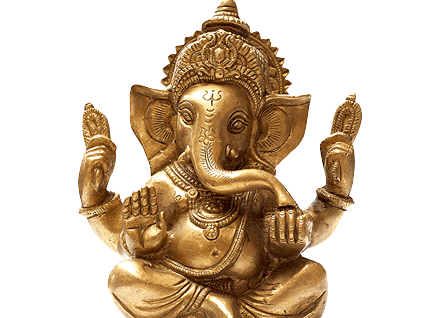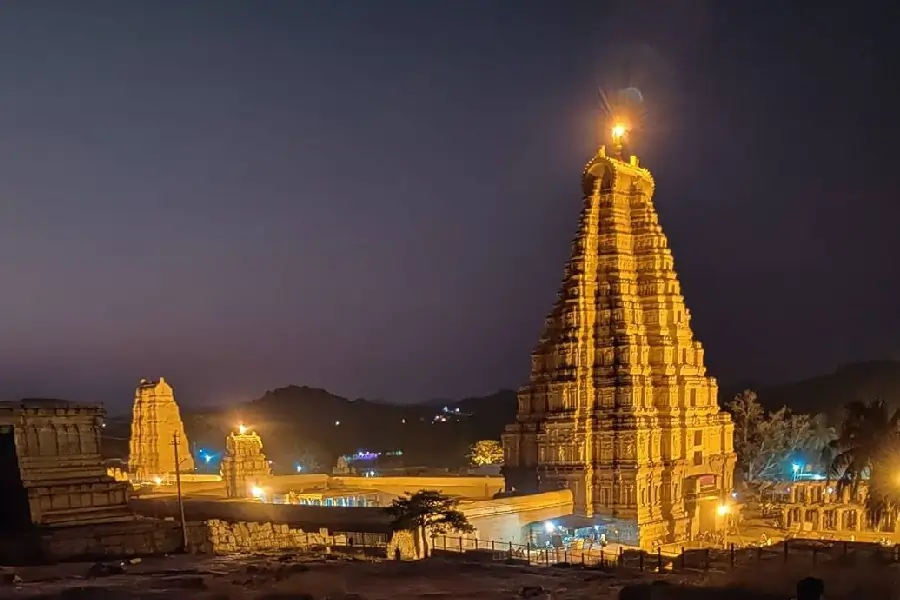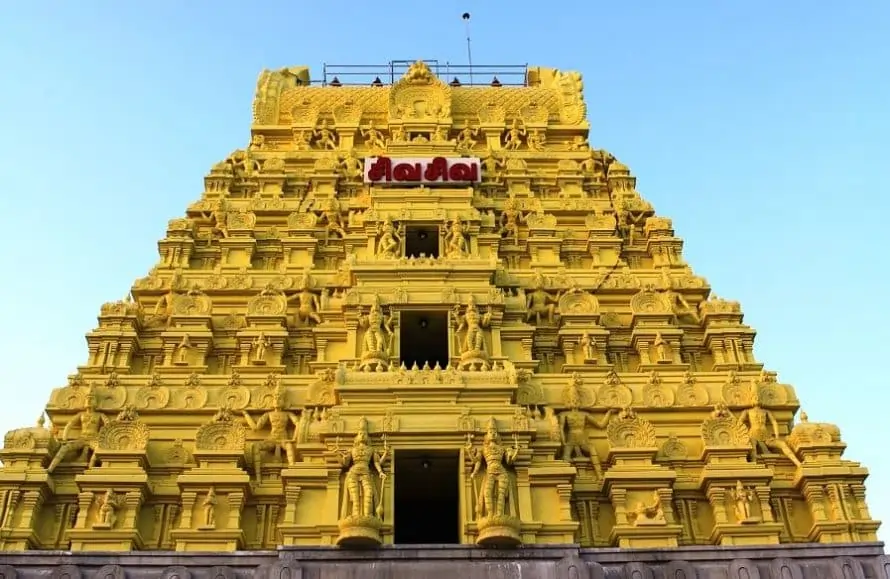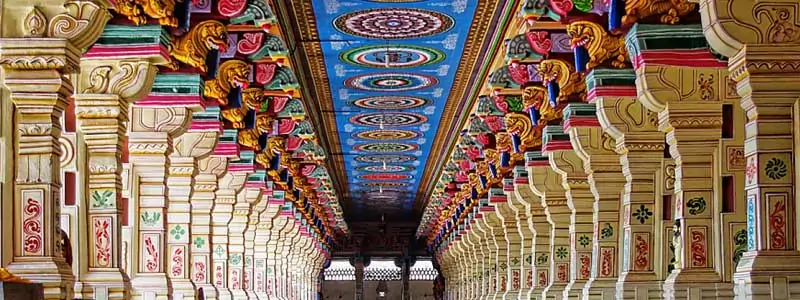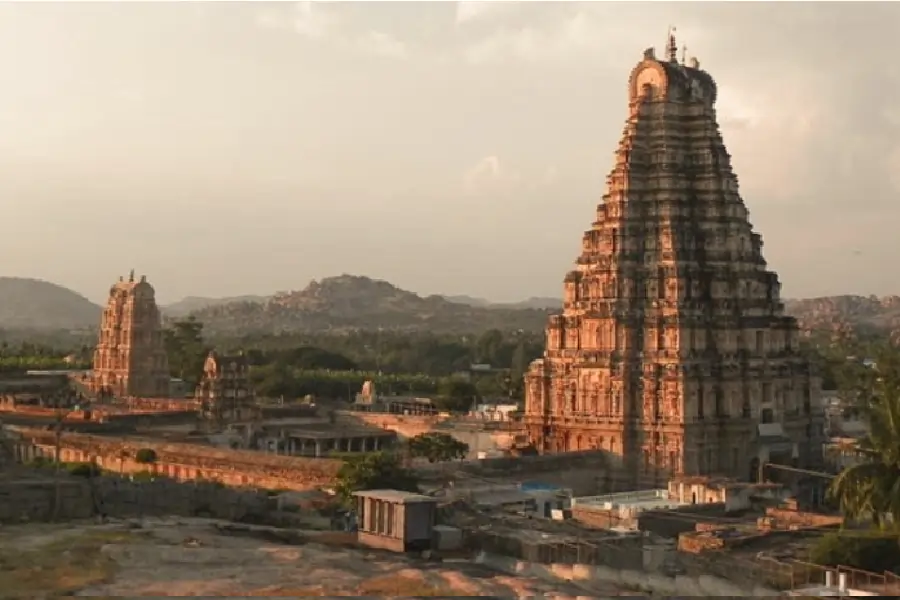
Tamresari Temple: History, Significance, Timing, Rules

The Kesai Khaiti Temple, also known as Tamresari Temple, is situated in the Tinsukia district of Assam, India, about 18 km from Sadiya. The Deoris were the original worshippers of the temple, which is believed to be the remains of an ancient temple constructed by the Chutiyas in the 15th century. The name “Kesai khaiti” comes from the Assamese words “kesa” meaning raw, and “Haiti” meaning eat, which refers to a semi-pre-Hindu Goddess similar to Goddess Kali, who accepts offerings of raw meat.
The temple’s walls and doors feature stunning designs, with two giant elephant sculptures with silver tusks at the main entrance. The builders constructed the walls of the temple without using mortar, and they used copper to make the roof. Because of this, people know the temple as Tamreswari. The entire temple is surrounded by brick walls, and in the past, people used the western wall to perform human sacrifices.
Know More:- Sukreswar Temple Assam
History of Tamresari Temple
In the 17th century, King Jayadhvaj Singha from the Ahom dynasty constructed the temple to honor Lord Vishnu, who is worshipped as an incarnation of Lord Ranganatha. The temple is constructed on a raised platform and is encompassed by a large garden. The then-Ahom king constructed the temple to express his gratitude to the divine power for his victory. The original temple was made using wood, later replaced by a stone structure in the 19th century.
The Archaeological Survey of India carried out restoration work in the 20th century, resulting in the current structure of the temple, which combines Ahom and Hindu elements. The temple’s unique architecture is well-known, and it has undergone several renovations over the years. The temple has a rectangular base and features four entrances, each facing a different direction. The temple is surrounded by a large courtyard used for various religious ceremonies and festivals. The intricate carvings and sculptures on the temple walls depict scenes from Hindu mythology and the Ahom Kingdom’s history, making it an important cultural and historical landmark in Assam.
Must Read:- Dhekiakhowa Bornamghar Temple and Everything About Bagheswari Temple
Significance
Tamresari Temple holds immense significance for the people of Assam, especially the devotees of Lord Shiva. The temple is believed to be one of the oldest and most revered Shiva temples in the region. It symbolizes Assam’s rich cultural and religious heritage and attracts devotees and tourists from different parts of the country.
Many devotees consider the temple a holy site to offer prayers and seek blessings from Lord Shiva. The temple hosts the annual Shivratri festival, which attracts a large number of devotees who celebrate the occasion with great fervor and enthusiasm. The serene ambiance of the temple, coupled with the sound of the nearby Brahmaputra River, makes it a must-visit destination for those seeking peace and spiritual rejuvenation.
Its religious significance, Tamresari Temple, is also an architectural marvel, reflecting the unique blend of indigenous and foreign architectural styles. The temple’s intricate carvings, sculptures, and murals depict the region’s rich cultural history and provide a glimpse into the bygone era.
Tamresari Temple is an important landmark in Assam, representing the state’s religious, cultural, and architectural heritage. It is a testament to the region’s rich past and continues to be an integral part of the people’s lives, serving as a source of spiritual inspiration and cultural pride.
Read More:- Famous Temples of Assam
The tradition of Tamresari Temple
Tamresari Temple is steeped in tradition, and every year, numerous rituals are performed in accordance with the Hindu faith. One of the most important festivals celebrated here is the Durga Puja, a nine-day festival honoring the goddess Durga. The temple is also known for its unique tradition of celebrating the wedding of Lord Shiva and Parvati every year. During this festival, devotees flock to the temple to witness the marriage ceremony and seek blessings from the divine couple.
Another unique tradition of the Tamresari Temple is the offering of ‘paan’ (betel leaves) to the deity. The practice is thought to have originated from the legend of how the goddess Durga saved the lives of Lord Shiva and Parvati from a venomous snake by providing them with betel leaves to chew on. Since then, offering paan to the goddess has become an integral part of the temple’s rituals.
The temple also follows the traditional Hindu practice of ‘darshan,’ which involves the devotees seeking blessings from the deity by seeing the idol. The temple authorities have established specific darshan timings, and they expect devotees to follow the rules and regulations while seeking blessings from the deity.
Must Read:- Rangnath Dol Temple Assam
Opening Timing of Tamresari Temple
The Tamresari Temple is open for visitors from early morning until late evening. The temple opens at around 6:00 AM and closes at 8:00 PM. Devotees can visit the temple during these hours to offer prayers and seek blessings from the deity. It is important to note that the temple may have different timings during special occasions and festivals. Visitors can check the timings with the temple authorities before planning their visit.
Know more:- 51 Shakti Peeth
Rules & Regulations
- Dress Code: Visitors must dress modestly, covering their shoulders and legs, and they should not wear revealing clothing or carry weapons within the temple premises.
- Footwear: Visitors must remove their shoes before entering the temple premises. They can leave them outside or deposit them at the designated footwear counter.
- Photography: Photography inside the temple is generally prohibited, and visitors must seek permission before taking photographs of the temple or its surroundings.
- Silence: Visitors must maintain a peaceful and quiet environment inside the temple.
- Respect for Deities: Visitors must show respect towards the deities, and they should not touch or cause any damage to the idols or temple structures.
- Food: Visitors cannot carry any food items inside the temple. However, some temples offer prasad or food as a form of blessing.
Tamresari Temple Route or Visitors
Tamresari Temple is located in the Sibsagar district in the state of Assam. Public transport or private vehicles can easily access the temple via road. The nearest airport is in Jorhat, which is approximately 55 km away from the temple. Visitors can also take a train to the nearest railway station in Simaluguri, about 16 km from the temple. Visitors can hire a taxi or take a bus to the temple from there. It is advisable to check the route and mode of transport before planning a visit to Tamresari Temple.

